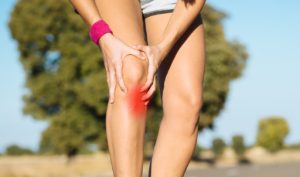Pes Anserine Bursitis

Pes anserine means “goose’s foot” and is composed of three tendons which course along the medial side of the knee. They combine together and attach to the tibia – shin bone – just below the knee. Two of these tendons come from groin or inner thigh muscles (gracilis and sartorius) while the third tendon comes from the hamstrings (semitendinosus). Between these tendons and the bone is a small sack of fluid – a bursa – which protects the tendons from rubbing against the bone. Together, these three tendons help motion at the hip and knee – hip flexion, external rotation and knee flexion.
What is pes anserine bursitis?
Inflammation of the bursa deep to the pes anserine tendon attachment on the tibia is called bursitis. The bursa may, or may not, become swollen. If it does, the swelling can become noticeable just below and medial to the knee. Pain is often the first symptom and is aggravated by exercise, especially those in which the knee and hip are flexed. For the runner, this generally occurs with repetitive training on hills or inclines, up or down. Some cross-training exercises may aggravate symptoms. Sitting for extended periods of time may cause pain due to a relative shortening of the three pes anserine muscles: think hip and knee flexion. Even sitting for long periods of time with the affected leg crossed over the other leg can lead to aggravation of symptoms. Outside of running, pes anserine bursitis is caused by repetitive kicking of a ball, repeat pivoting from a deep knee bend, and even some swimming movements (breaststroke kicking).
How is it treated?
Treatment of pes anserine bursitis starts with reducing or eliminating activities which are directly causing the pain. This generally involves adjustments to training environment, intensity, and duration. Treatment also involves reducing inflammation in the affected area. This is best treated with ice and non-steroidal anti-inflammatory medication (NSAIDs). In addition, a cortisone injection may be helpful in cases where the inflammation is severe or when it does not respond to other treatment. Improving the flexibility and strength of the gracilis, sartorius, and semitendinosus has been shown to reduce the pain and inflammation of the bursa.
How long does it take for treatment to be successful?
Everyone recovers at a different rate. Return to running will be determined by how soon the inflammation resolves along with how quickly your flexibility and strength improve to optimal levels. In general, the longer you have had the symptoms, the long it will take to recover. Return to running is generally safe when:
- The injured knee can be flexed and extended without pain
- The knee and leg strength are the same as the uninjured side
- The bursa is no longer tender to touch
- You can jog in a straight line without limping
- You can run straight then cut side to side without pain
- You are able to jump on both legs without pain in the injured leg
How can pes anserine bursitis be prevented?
Establishing and maintaining proper strength and flexibility will reduce atypical biomechanical forces on the pes anserine tendons. Stretching on a regular basis and with activities can reduce those forces. Cross-training in a safe manner can provide adequate strength in the muscles of the leg.
This information is not intended to diagnose, treat, or prevent any injury or disease. It is intended to serve as an overview of running-related injuries and should not be used as a substitute for sound medical advice from a doctor or therapist.


